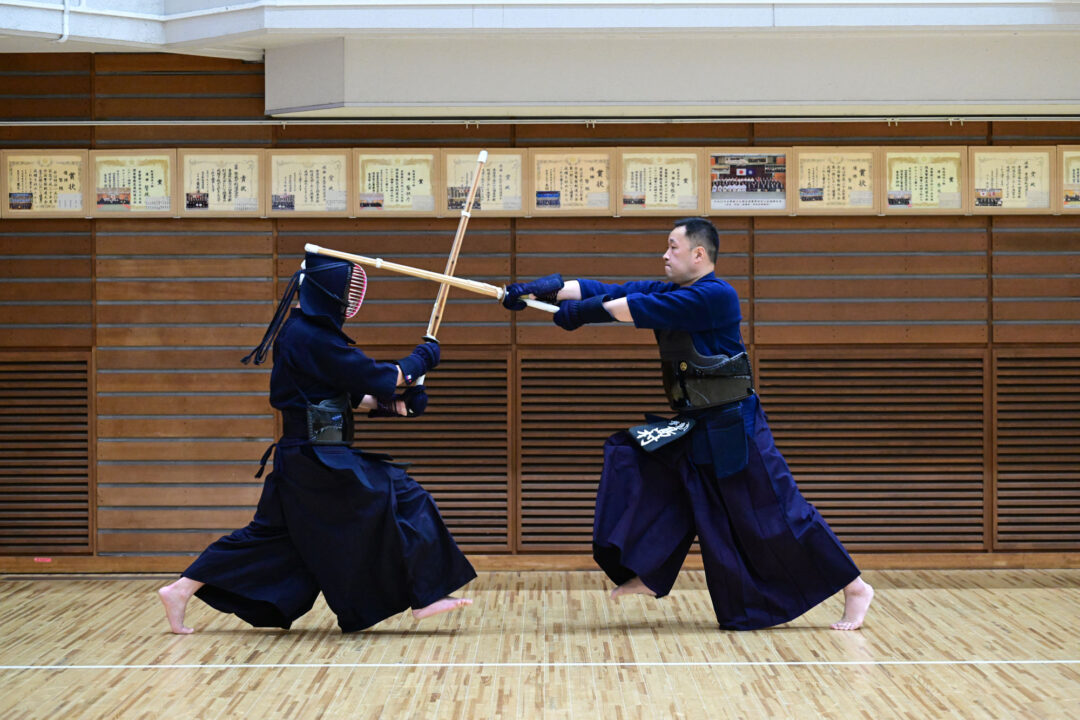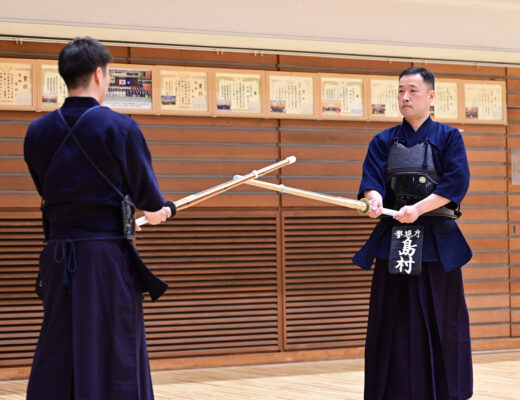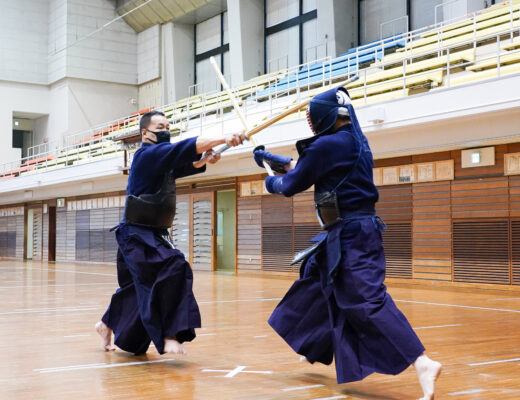2024.8 KENDOJIDAI
Photography: Nishiguchi Kunihiko
Composition: Teraoka Tomoyuki
Translation: Pepijn Boomgaard
Shimamura Tsuyoshi was the captain of the Tokyo team that won the 72nd All Japan Interprefecture Tournament. His Kendo, based on striking with abandon from an upright Kamae, was a striking presence in the venue. He says, “In order to make the Kamae meaningful for a valid strike, I think you should be aware of the exchanges of truths.” We asked him about his methodology for acquiring a functional Kamae.
Shimamura Tsuyoshi (Kyoshi 8th Dan)

Born in Kanagawa in 1974. After graduating from Tokai University Sagami High School, he joined the Metropolitan Police Department. His achievements include placing second at the Prince Tomohito 8th Dan Invitational Tournament, participating in the All Japan Championship, winning the All Japan Interprefecture Tournament, winning the National Sports Festival (Kokutai), and winning the individual and team All Japan Police Championship. Currently, Kendo instructor at the Metropolitan Police Department.
When you prepare your physical and mental Kamae your Kamae will come to life
It is very difficult for me, even though I am over 50 years old, to have an effective Kamae and have power in my Kensen. These are things that I must learn in my future training. I hope that my thoughts on this point can be of some help to you, even though I am still in the process of learning myself.
There are two types of Kamae: the visible “Migamae” and the invisible “Kigamae”. For Migamae, I aim to create a Kamae that is beautiful and magnificent to look at, while adhering to the basic Kamae. However, I believe that Kamae is effective when in addition to appearance, there is substance. You have to be able to strike instantly no matter the situation, or be able to deal with the opponent’s movements. In order to achieve this, I feel that it is very important to be aware of the left half of the body, including the left hand, left hip, and left leg.
As for Kigamae, I still follow the words of Kida Seiichi Sensei, my instructor at Tokai University Sagami High School, who said, “The mind is the general, and the body is the soldier.”
I think this means to maintain a posture in which you can move lightly and are ready to strike at any time, while facing your opponent without any trick, as if you were a general. Looking back on my training in high school, I was told to use large swings and big movements. There was almost no detailed technical instruction. I think this way of teaching suited my clumsy self. As a result of tackling my training and matches with a focus on forward-moving techniques, I have acquired the Kendo that had led me to where I am today.
After graduating from high school and joining the Metropolitan Police Department, I began to think about Kamae even more. This is because I was to sense the “Kigurai” of the Sensei I was training with on a daily basis. Kigurai is the air of power and dignity that emanates from the confidence that comes from training. I would be scared of the Sensei at the Metropolitan Police Department just by facing them in Kamae. When I entered the Tokuren, I immediately understood that the reason why they were able to employ this kind of Kendo was because of the intense training of the Metropolitan Police Department.
At the Metropolitan Police Department’s Tokuren, the basic fundamentals, such as Suburi and Ashisabaki, are first thoroughly trained. I was taught that by swinging your Bokuto or Shinai until you can no longer feel your hands, you will understand your own Kamae and Tenouchi. I often hear phrases such as “Kendo that is typical of the Metropolitan Police Department,” and I believe that this is because everyone there learns correct and strong Kendo through intense training of the basics. I also naturally developed a sense of spirit and intimidation in my Kamae.
By looking at the opponent through the eyes of the observer, you will be able to see the real movement
The rest of this article is only available for Kendo Jidai International subscribers!




